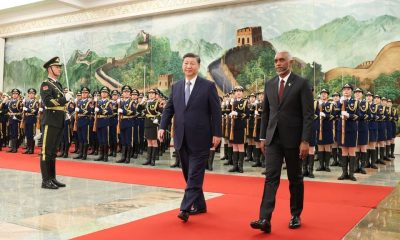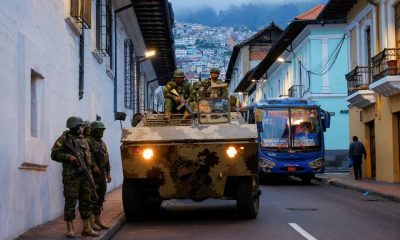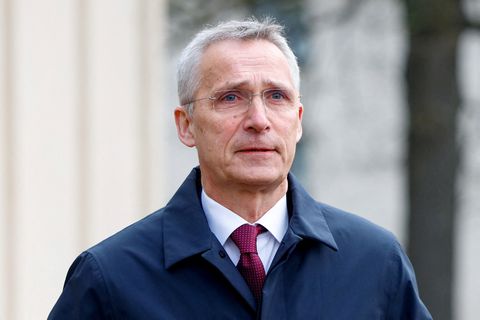Geopolitics & Foreign Policy
Israeli forces storm Gaza’s Khan Younis, hospitals overrun.
On Tuesday, Israeli soldiers began their assault on the largest city in the southern Gaza Strip. Hospitals were flooded with a large number of Palestinians who had been injured or killed during the assault.
Residents said that Israeli tanks had penetrated the eastern areas of Khan Younis for the first time, crossing from the Israeli border barrier and pushing westward. This was the most significant ground assault since a ceasefire broke last week.
Residents said that some individuals took up positions within the town of Bani Suhaila, located on the eastern outskirts of Khan Younis. Others, on the other hand, continued their journey and were stationed on the edge of a housing development known as Hamad City, which Qatar sponsors.
The Israelis, who had previously taken control of the northern half of Gaza a month ago before stopping for a week-long ceasefire, have announced that they are now expanding their ground assault to include the remaining portion of the enclave to achieve their goal of destroying the Hamas leaders who are in charge of it.
From now on, we will move on to the second step. Eylon Levy, a spokeswoman for the administration, told reporters during a briefing that a second stage would be challenging from a military standpoint.
In his statement, he stated that Israel was willing to consider “constructive feedback” about the reduction of harm to civilians, provided that the advice was in line with Israel’s objective of eliminating Hamas.
In the aftermath of what survivors described as a strike that struck a school that was being used as a refuge for the displaced, the injured arrived at the significant Nasser hospital in Khan Younis via ambulance, vehicle, flatbed truck, and donkey cart.
Within the confines of a ward, nearly every square inch of floor space was occupied with injured patients, with medical personnel rushing from one patient to the next while the patient’s family wept.
After carrying the little corpse of a deceased child who was dressed in a tracksuit, a physician placed the youngster in a corner with his arms spread out on the tile that was stained with blood. A boy and a girl who had been injured were lying on the floor next to him. They were surrounded by bandages and rubber gloves that had been abandoned, and their limbs were entangled with the stands that were holding the IV drips in their arms.
Even though they were still coated in dust from the fall of the house that had buried their family, two little girls were receiving medical attention.
One of them cried, “My parents are buried beneath the rubble.” “I want my mum, I want my mum, I want my family.”
On the outside, men were seen carrying bodies that were covered in white and bleeding shrouds in preparation for their funerals. As many as a dozen victims were found lying on the ground. A motorbike cart was used to remove five or six of them.
Aisha al-Raqb, who was 70 years old at the time, stated that her son Iyad was one among the deceased and extended a hand that was stained with blood.
“The blood in this is his.” The valuable blood that he has is this. I pray that Allah will have his soul forgiven. Oh, my sweetheart. “Oh God, oh God, I want to smell his scent, smell his scent, I want to smell his scent,” she said.
Ashra al-Qidra, a spokesman for the Gaza Health Ministry, stated that at least 43 bodies had already arrived at Nasser Hospital that morning. It is believed that dozens more bodies were suspected to be stuck beneath debris or in different areas that were unsuitable for ambulances to retrieve them.
“Hospitals in the southern Gaza Strip are totally collapsing, they cannot deal with the quantity and quality of injuries that arrive at the hospitals,” added the politician.
In the second phase of the Gaza war, which Israel initiated as a form of retaliation following an offensive on October 7 by Hamas gunmen who rampaged through cities, murdering 1,200 people and taking 240 captives according to Israel’s tally, Washington has urged on its close partner Israel to do more to lessen the suffering that does to civilians.
Eighty percent of Gaza’s 2.3 million citizens have been forced to flee their homes as a result of Israel’s unprecedented shelling of the Gaza Strip. Most of these people are converging on the southern neighborhoods, which are currently in the firing line.
There are around 15,800 persons who have been verified killed, according to Gaza health professionals who have been regarded as reputable by the United Nations. Additionally, many more people are missing and are believed to be buried under rubble.
Hamas fighters who operate among residents, especially from underground tunnels that can only be demolished with enormous bombs, are said to be responsible for the harm that has been caused to other civilians, according to Israel. Hamas refutes this assertion.
Israel has been releasing an internet map ever since the ceasefire broke down to assist Gazans in determining which areas of the enclave they should flee. This is the eastern section of Khan Younis, which was marked out on it on Monday. It is home to hundreds of thousands, most of whom fled on foot.
“What civilians should do to stay safe is listen to the instructions that are coming out from our Twitter accounts, from our website, and also to look at the leaflets that are landing in their areas,” Israeli military spokesperson Richard Hecht told reporters on Tuesday. “What they should do is listen to the instructions that are coming out.”
Those who live in Gaza claim that there is no safe place left to go because the remaining communities and shelters are already at capacity. In addition to the city of Rafah, which is located close to the Egyptian border south of Khan Younis, Israel has continued to bomb the locations where it is instructing Palestinians to go throughout this conflict.
“The situation is getting worse by the hour,” Richard Peeperkorn, a representative of the World Health Organization in Gaza, told reporters remotely over a video link from southern Gaza. “There’s intensified bombing going on all around, including here in the southern areas, Khan Younis and even in Rafah.”
Geopolitics & Foreign Policy
Despair in Gaza as fighting intensifies despite Israel’s promise to scale back the war.
Israeli bombings in southern and central Gaza escalated on Wednesday, despite a commitment by Israel that it would withdraw some forces and transition to a more focused assault, as well as a beg from its partner Washington to decrease the number of civilian fatalities.
The Houthi movement in Yemen, which claims it is acting to help Gaza, launched the most significant strike to date against United States and British warships in the Red Sea. This is the most recent indication that the war, which has been going on for three months, is spreading. Both Washington and London have reported that they were successful in shooting down 21 missiles and drones that were intended for maritime channels. Nobody was wounded in the incident.
Following weeks of pressure from the United States to reduce its operations and transition to what Washington considers to be a more focused campaign, Israel said this week that it intended to begin bringing down forces, at least from the northern portion of Gaza.
However, it seems that the combat is as ferocious as it has ever been, particularly in the southern and central regions, which are the places where Israeli troops made ground gains a month ago.
In response to security concerns, the World Health Organization (WHO) decided to cancel a scheduled medical aid mission to Gaza. This is the sixth time in the past two weeks that such a mission has been canceled.
When an Israeli attack occurred on the major road near Deir al-Balah in the central Gaza Strip, the Palestinian Red Crescent reported that four of its employees were murdered. The strike occurred on the ambulance that they were riding in. The ambulance was carrying two people who were injured and eventually passed away.
More than 23,000 Palestinians have been murdered in Gaza since Israel began its effort to eliminate the Hamas terrorist group that rules the territory. This comes after Hamas members carried out a rampage on October 7 that resulted in the deaths of 1,200 Israelis and the abduction of 240 captives who were held captive.
Gaza’s health officials have calculated that almost forty percent of those who were murdered were under the age of eighteen.
Having lost their family home in an air attack that resulted in the death of their father, Laila al-Sultan, who is seven years old, and her brother Khaled, who is four years old, are currently residing in a tent shanty town in the southern region of Gaza.
“The house collapsed on us, and Daddy went to heaven, and he is very happy,” Khaled remarked as he bounced up and down on Laila’s lap. “The house collapsed on us.”
WARNING FROM HOUTHI
Antony Blinken, the Secretary of State of the United States of America, made his fourth trip to the area since the beginning of the conflict. On Wednesday, he traveled to Ramallah and met with Palestinian officials, including Mahmoud Abbas, the President of the Palestinian Authority (PA), in the West Bank, which is under Israeli occupation.
Even though it recognizes Israel’s right to exist and exercises limited self-rule in the West Bank, the Palestinian Authority (PA) lost control of Gaza in 2007. Hamas, which is committed to the destruction of Israel, took control of Gaza.
Blinken reportedly voiced his support for the establishment of a Palestinian state, emphasized the efforts being made to safeguard and assist people in Gaza, and advocated for “administrative reforms” to be implemented by the Palestinian Authority.
The Palestinian Authority (PA) said that Abbas advised Blinken that no Palestinians should be relocated from Gaza or the West Bank.
Furthermore, Blinken has spoken with officials from Israel and traveled to Arab governments in the vicinity to hunt for a potential settlement for the Gaza Strip and its population of 2.3 million people.
The meeting between Jordan’s King Abdullah and Egyptian President Abdel Fatah al-Sisi occurred in Aqaba on Wednesday. During the meeting, Jordan and Egypt issued a warning against any reoccupation of the Gaza Strip by Israel and made a request that inhabitants who had been uprooted be allowed to return to their homes.
Washington is concerned that the conflict in Gaza might spread bloodshed throughout the region, with armed organizations supported by Iran, Israel’s most opposed nation, unleashing strikes in Lebanon, Syria, Iraq, and Yemen in sympathy with Israel.
The Houthis, who control the majority of Yemen, have been bombing one of the busiest shipping routes in the world, which is located at the mouth of the Red Sea. As a result, the United States government has been forced to send warships to provide security.
According to a spokesman for the Houthi military, the group fired a large number of missiles and drones at a United States ship that was providing support to Israel. The spokesman referred to the attack as a “preliminary response” to an incident that occurred on New Year’s Eve, in which United States helicopters sank three boats carrying Houthi fighters who attempted to board a commercial vessel.
According to Blinken, who made this statement when he was in Bahrain, which was the next stop on his journey, there would be repercussions for ongoing attacks on commercial vessels.
“We’ve also repeatedly tried to make clear to Iran, as other countries have, that the support that they’re providing to the Houthis, including for these actions, needs to stop,” he said to reporters.
The no-let-up
Despite Israel’s public declarations since the New Year that it is reducing the intensity of the battle, the inhabitants of Gaza claim that they have not witnessed any reduction in the conflict. There has been at least one instance of the whole community being evicted from their houses, with many people being relocated many times as Israeli soldiers continue to advance.
The bodies of fifteen members of the Nofal family were laid out at a hospital morgue in Rafah, which is located on the southern fringe of the enclave. After an Israeli air strike overnight destroyed their home, the victims were there. Relatives wailed as they stared at the bodies.
The majority of the white shrouds were tiny, and they contained children. Um Ahmed, a mother of five now taking refuge in a tent near Rafah, stated that Gazans had anticipated Blinken’s presence would signal they would be allowed to return to their homes.
It is comparable to words written in butter, since it vanished as soon as the sun rose in the sky. She said, “Those were Blinken’s words, and they were fake.”
Geopolitics & Foreign Policy
The Maldives upgrades ties with China amid pivot from India.
The Maldives upgraded ties with China amid a pivot from India. Following a campaign in which he painted China’s regional rival India as a danger to sovereignty, newly elected President Mohamed Muizzu of the Maldives boosted ties with China on Wednesday on his first state visit to Beijing.
Speaking at the Great Hall of the People, Chinese President Xi Jinping referred to Muizzu as “an old friend” as the Asian behemoth agreed to a “comprehensive strategic cooperative partnership,” opening the door for more investment in the Indian Ocean archipelago.
Xi told Muizzu, “China and the Maldives’ relations are facing a historic opportunity to carry forward the past and forge ahead into the future,” according to Chinese official media.
After winning on his “India Out” platform, whereby he described New Delhi’s enormous influence as a danger to sovereignty, Muizzu assumed office in November. Despite being deeply indebted to Beijing, his administration has recently requested hundreds of Indian military troops stationed locally to leave while promoting opportunities for Chinese businesses.
Following a military skirmish in the western Himalayas in June 2020 that claimed the lives of 20 Indian and 4 Chinese soldiers, ties between the two countries plummeted.
China is paving the way for more investment in a region where India has already witnessed another neighbor, Sri Lanka, move closer to China by strengthening its relations with the Maldives.
Following the meeting, his presidential office said that “20 key agreements between the two countries” had been signed. “During the talks, President Dr. Muizzu expressed gratitude for China’s significant role in the Maldives’ economic success and infrastructure development,” the statement said.
According to World Bank data, the Maldives owes China $1.37 billion, or around 20% of its public debt, which puts Beijing ahead of Saudi Arabia and India, which owe $124 million and $123 million, respectively, as its largest bilateral creditors.
According to statistics from the American Enterprise Institute think tank, since the Maldives decided to join the Belt and Road Initiative in 2014, Chinese companies have made additional investments in the country totaling $1.37 billion.
According to official media, Xi stated, “China firmly supports the Maldives in safeguarding its national sovereignty, independence, and national dignity.” Plus, according to Xinhua, Beijing would be open to “exchanging experience of state governance” with Male.
Before meeting with Xi, Muizzu was shown a video on X, formerly known as Twitter, via his presidential office account. The video showed him touring the Chinese Communist Party Museum in Beijing.
In an October development assessment on the Maldives, the World Bank cautioned that further cozying up to China may be problematic since there was a “lack of domestic investment opportunities” and a “build-up of sovereign exposure” during the epidemic.
Xi stated that he supported more direct flights between the two nations, which might benefit the Maldives’ travel and tourist industry, which the Asian Development Bank estimates would account for 79% of the country’s economic development in 2022.
Geopolitics & Foreign Policy
Ecuador’s president says the country is at war as gangs hold prison staff hostage.
Daniel Noboa, the president of Ecuador, declared on Wednesday that his nation was “at war” with criminal gangs that had over 130 jail guards and other employees as hostages. He momentarily took over a TV station via live broadcast and detonated explosives in a wave of violence that has left significant streets desolate.
On Tuesday, Noboa designated 22 gangs as terrorist groups, designating them as recognized military targets. Upon assuming office in November, the president committed to addressing the escalating security issue stemming from an increase in drug-trafficking organizations smuggling cocaine via Ecuador.
Noboa declared on Wednesday, “We are at war and we cannot cede in the face of these terrorist groups.” Noboa declared a 60-day state of emergency in response to the hostage-takings, which started in the small hours of Monday, and the alleged weekend escape of Los Choneros gang boss Adolfo Macias from jail.
On Tuesday, following a string of explosions around the nation and a spectacular live-streamed takeover of a TV station by gunmen, he tightened the edict.
The government claims that Noboa’s proposal to construct two new, high-security prisons for gang leaders is the reason for the violence, and Noboa informed the radio station that the designs for the two new institutions will be revealed to the public tomorrow.
Noboa declared, “We are doing everything in our power to free all of the hostages,” adding that the military had assumed control of the rescue operation. “We are doing everything possible, and the impossible, to get them safe and sound.”
According to the SNAI prisons agency, 125 captives are guards, while the remaining 14 are administrative employees. It stated that eleven individuals were let go on Tuesday.
Social media users posted videos of prison staff members being shot and hanged, among other acts of horrific cruelty. Reuters could not immediately confirm the validity of the films. According to Noboa, the nation will start deporting foreign inmates this week, particularly those from Colombia, to lower the jail population and costs.
Approximately 1,500 individuals from Colombia are incarcerated in Ecuador, according to Noboa, who also stated that 90% of foreign inmates are from Colombia, Peru, and Venezuela.
Colombian legislation requires that repatriations be evaluated on a case-by-case basis and predicated on inmates’ petitions. Despite this, Colombia’s justice minister stated on local radio on Tuesday that he was eager to negotiate with Ecuador.
Like many other Latin American nations, Colombia has supported the Ecuadorian government. On Wednesday, the country said it would strengthen its military presence and control along their shared border, which spans over 600 kilometers (370 miles).
PERMANENT VIOLENCE
Noboa told the radio station that ensuring the rule of law and enhancing security would be the best ways to protect the economy and foreign investment.
On Tuesday, lawmakers endorsed Noboa’s initiatives and supported the armed forces. After his party formed alliances with a Christian party and the socialist movement of former President Rafael Correa, Noboa now leads a majority coalition in Congress.
Noboa stated, “I have asked for their support, but I don’t need their approval right now for what we are doing,” about the decrees. On Wednesday morning, Noboa also had a meeting in Quito with ambassadors to Ecuador.
The police reported on Wednesday that since Monday, there have been 70 arrests about various incidents, including the seizure of the TV station.
Four police officers are still being detained after criminals allegedly abducted them between Monday and Tuesday. Late on Tuesday, three more cops were released. The police were identifying the three victims found in a burned-out car overnight south of the capital and adding that there was still violence in Guayaquil, the country’s largest city.
On Tuesday, armed individuals killed two police officers in the province of Guayas, where Guayaquil is located. The cops did not offer any more information. On Wednesday morning, many shops were closed, leaving the streets of Quito and Guayaquil quiet.
A major Chinese investor in Ecuador said that the Chinese embassy and consulates would be temporarily shuttered. All around the country, schools were closed, but courses continued digitally. Locals reported feeling as though pandemic lockdowns were again in place.
“The streets are very empty; it’s horrible,” forty-year-old Rodolfo Tuaz, a security guard in Guayaquil, said. “It’s a frigid environment, as if there were a new COVID.”
-
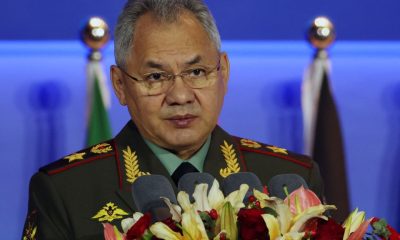
 Europe7 months ago
Europe7 months agoRussia’s Shoigu accuses the West of seeking to expand the Ukraine war to the Asia-Pacific.
-
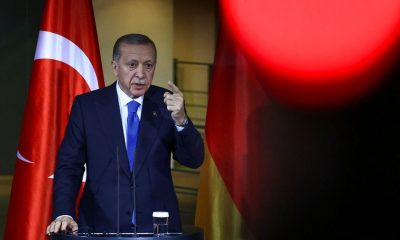
 Geopolitics & Foreign Policy6 months ago
Geopolitics & Foreign Policy6 months agoTurkey’s Erdogan says he may visit Egypt soon, discuss Gaza patients -media.
-
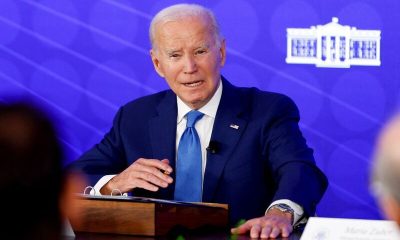
 America8 months ago
America8 months agoRepublican US House to hold first Biden impeachment inquiry hearing
-

 Geopolitics & Foreign Policy6 months ago
Geopolitics & Foreign Policy6 months agoRussia deploys new nuclear missile in Kaluga region – RIA
-

 Geopolitics & Foreign Policy6 months ago
Geopolitics & Foreign Policy6 months agoCeasefire takes hold in Gaza ahead of hostage release; aid enters enclave.
-

 Gender, Sexuality & Identity8 months ago
Gender, Sexuality & Identity8 months agoGreenland women ask Denmark for compensation over involuntary birth control.
-
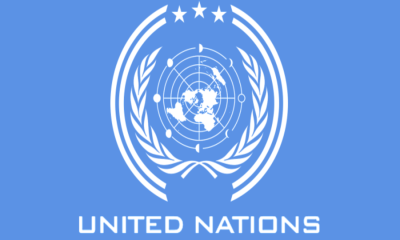
 Global Issues & Cooperation8 months ago
Global Issues & Cooperation8 months agoHuman rights in Russia have ‘significantly deteriorated’ – UN expert.
-

 ECONOMY5 months ago
ECONOMY5 months agoFinland will sign a defense pact with the US.




